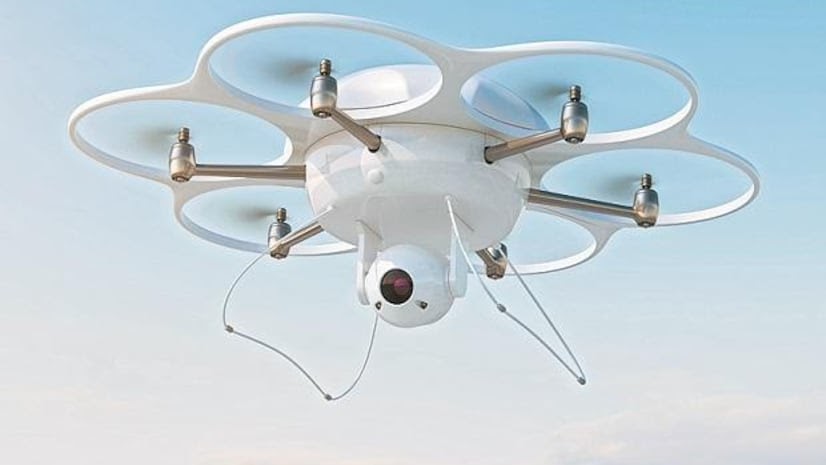
Grene Robotics has built a complete counter drone system called Indrajaal. The company claims that Indrajaal can detect, identify, track, target and destroy a hostile drone system
By Vikas Gupta
Defence News of India, 4 July 23
With drones increasingly breaching high-security areas, the discovery of a drone over Prime Minister Narendra Modi’s residence on Monday morning set off alarm bells.
Executives from companies that develop security systems against drones say the security breach could have been avoided if the prime minister’s residence – designated a no-fly zone – had deployed a system capable of detecting drones.
“As a growing nation, we have noticed an increase in drone attacks, and the drone over Prime Minister Modi’s residence is a wake-up call. Today, the risk of not having the right drone security is far higher than anyone can anticipate. Either way, what is the cost of protecting the life of a political leader? wondered Kiran Raju, who runs counter-drone systems maker Grene Robotics.
Grene Robotics has built a complete counter drone system called Indrajaal. The company claims that Indrajaal can detect, identify, track, target and destroy a hostile drone system. The company says it is working with the Ministry of Defense (MoD) to operationalize the Indrajaal.
Raju explains how Indrajaal’s functions: “When a drone is identified as a threat, Indrajaal assesses the level of threat it poses to defended assets in the area. These assessments, algorithmic in nature, are supported by a rapid analysis tool which uses data generated by the system. Artificial intelligence (AI) can also be used to help process the data and reveal patterns.”
“Indrajaal’s design principle is based on a combination of 12 unique technology layers powered by AI, cybersecurity, robotics, machine vision and sensor fusion,” the company explains.
“While the probe is being made, the question to ask is: how many cameras can face the sky, and even when an intrusion is observed, how can this be countered? Is there a foolproof investigative process to detect, track and disrupt theft of unmanned aerial vehicles (UAVs)? explains Raju.
“It can integrate with all current weapon and infrastructure suites to cover a wide area of up to 4,000 square kilometers per system, eliminating the need to deploy multiple unmanned aircraft systems (C-UAS) “, declares the company.
Indrajaal defends against various low-radar cross-section threats, including Medium Altitude Long Endurance (MALE) and High Altitude Long Endurance (HALE) drones, lurking munitions, smart bombs, rocket showers, nano and micro drones, swarm drones, and more.
========================
drone-talk
Drone threats
Unauthorized monitoring Camera-equipped drones can be used for intrusive surveillance, capturing images and videos of VIPs in their homes without their consent or knowledge, compromising their privacy.
Security vulnerabilities Malicious individuals or groups can use drones to gather intelligence about VIP houses, including security systems, entry points and vulnerabilities. This information could be used to plan criminal activities or target the VIPs themselves.
Physical threats Drones can carry payloads such as explosives or weapons to pose a physical threat to VIPs and their homes.
Trespass and Trespass Drones can fly over private property, cross boundaries, invade personal space and privacy.
Countering drone threats
Drone detection systems Advanced technologies such as radar, radio frequency detection or visual recognition systems can help identify and track drones in protected areas.
Anti-drone measures Anti-drone systems such as signal jamming, directed energy weapons, or network-based interception can neutralize or disable unauthorized drones and prevent them from approaching the protected area.
Legal dispositions Governments can enact or enforce laws and regulations regarding the use of drones near vulnerable properties. Regulations can include flight altitude restrictions, drone operating permits, and penalties for unauthorized surveillance.
Enhanced security measures VIP houses can detect/deter drones with physical security measures, such as high walls, anti-drone nets, or infrared sensors. Security personnel with expertise in drone detection and mitigation may be used.
Education and awareness VIPs and their security teams should receive training on the risks associated with drones, including privacy invasion and security breaches. They must stay informed of the latest drone technologies and countermeasures.
Cooperation with authorities VIPs can work with local law enforcement and relevant government agencies to establish protocols for drone incidents, ensuring a coordinated response to potential threats.






